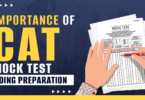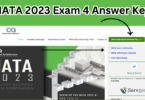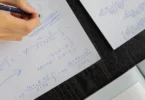Either you are enrolled in Elite IAS or pursuing online coaching for IAS; ones your course is over, you may wish to enrich your knowledge with some extra valuable study materials.
The books recommended by the UPSC toppers play a highly important role when it comes to tightening one’s grip over the subject in order to clear the UPSC exam within the first attempt itself. Besides, the recommendation by those who have already cleared the exam successfully helps the UPSC candidates to save their time, they might have spent otherwise seeking guidance to choose the right books.
However, it should always be kept in mind that quality is always far better than quantity. So, even if the books happen to be recommended by the UPSC toppers, it is you who is to read them and prepare for the exam. That is to say that it is the candidate and not the book(s) that is going to face the exam and join Indian Administrative Services.
The point to be noted is that it is always advisable to seek guidance from the toppers and make an access to the books as well. But this guidance seeking exercise is going to serve well only when the candidate makes a thorough reading of the books finally chosen by him. Once, you choose all of the books required to be studied, it is best to make a time table and stick to it, reading sincerely and keeping all the disturbances as far as possible. It is thorough concentration that would go far.
Given below is a list of the books that the UPSC toppers usually recommend to prepare for the exam.
- Indian Polity by M. Laxmikanth: The book does not require any introduction at all for it is widely considered among the most comprehensive of the books on the subject. That’s what that makes it one of the most well read of the books. No wonder, it has continuously been one of the best sellers for a number of years. Apart from the UPSC exam, the book is considered as a must read for the candidates aspiring to clear a number of other competitive exams as well.
- Indian Art and Culture by Nitin Singhania: It discusses the Indian heritage and culture in a brilliant manner. The book encompasses various aspects related to the art and culture of India specifically art, music, paintings, and architecture etc. Besides, what makes the reading more interesting is the inclusion of the informative and interesting diagrams and pictures in the book wherever required. And that’s not all. Apart from the highly informative content, there are a number of the questions that help the UPSC aspirants prepare for the UPSC exam in a highly efficient manner.
- Certificate Physical and Human Geography by Goh Cheng Leong: The subject is covered in a simple and lucid language. It is remarkable that even the elementary details of various topics related to the subject are covered in a manner so that the concepts are crystal clear even to those who have just begun to read the subject with very little knowledge of it. You will also find many illustrations, photographs and maps with descriptions carrying the required details within the book. Besides, the book encompasses various topics related to Geography such as changes in the climate as well as climatic patterns, various kinds of the natural vegetation, deserts, mountain chains, glaciers, and a wide range of the natural phenomena.
- Oxford School Atlas by Oxford Publishers: The atlas includes lucid and easily understandable maps. There are a considerable number of the Indian maps along with suitable diagrams and charts as and when required. There are physical and the political maps of India. The atlas is highly informative and extensively covers the core issues of geography such as natural vegetation, climate, wildlife, minerals, agriculture, natural hazards, environmental concerns, etc.
- Indian Economy by Ramesh Singh: The book encompasses the entire UPSC syllabus for the Prelims and the Mains, giving it a highly extensive and comprehensive coverage. The book has been known to be a best seller for many years.
- Economic Survey by Ministry of Finance: It is considered to be among the most regularly updated and also the most authoritative sources of information including the relevant details of data on the subject. The survey not only presents a brilliant summary of the government policies and performance, but it also identifies the varying challenges. It is advisable to get the latest updated copy for each year to make the most of it.
- India Year Book: It is a reference book prepared by the Publication Division of the Indian Government. Not only is the compilation highly authoritative, it provides an extensively detailed coverage of the current affairs. The book encompasses the public schemes, state policy, important dignitaries, apart from the detailed data that is important to study the demographics. The book is also a highly authentic source of information for economy, trade and a number of other fields. As already stated, it is a government publication. So it serves as a good source of reference for researchers, reputed publications as well as media. The book is available in Hindi as well as English.
- General Studies Paper 2 Manual by MHE (CSAT): It is a publication of McGraw-Hill Education. It gives an extensive coverage to the syllabus prescribed by UPSC. Besides, the examination pattern is also well taken care of. However, the book provides relevantly required material for both theories as well as practice as CSAT is the qualifying exam. But not only is the book divided into suitably relevant sections, but there is also a separate section for the practice questions that makes the publication well structured and organized one.
However, it is worth noting that apart from the books listed above, one must not ignore the NCERT books. They have always been a good source of information. Besides, the students should not ignore any of the books or the study material that they find relevant as per the UPSC syllabus.
For example, A Brief History of Modern India by Rajiv Ahir deserves to be mentioned here. It covers the span of time after the Mughal Empire declined. The rise of the East India Company and the beginning of the British rule is also well covered. Besides, it is remarkable to note that a chronological sequence of the events since India’s first war for independence in 1857 till the time the nation acquired independence in 1947 is well described with all the required details. Reading the book must not be given a miss specifically when you do not have the time to read the entire of Modern India by Bipan Chandra or India’s Struggle for Independence. Last but not the least, if you want to complete whole UPSC syllabus in the shortest time with logical direction then you can opt for online IAS coaching. Nowadays it is becoming very popular among IAS aspirants, this saves your time and you study under the guidance of an experienced team of teachers.







